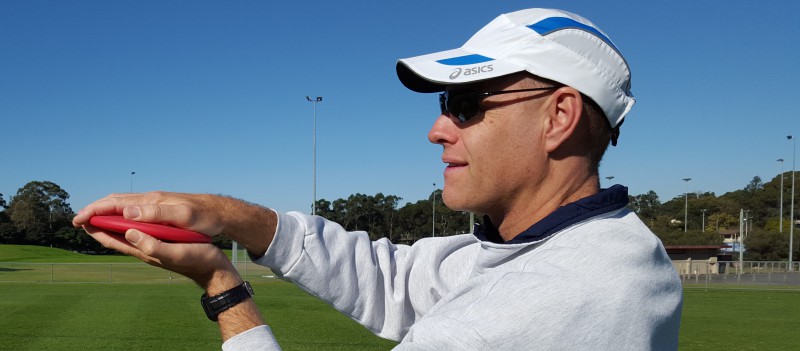10 Things That Will Help You Coach Long Jump To Kids
Tip 1: Use A Consistent Start To The Run-Up
Young longer jumpers should start in the same spot, in the same way, each time. For young kids, put a marker down to show them where you would like them to start. For older kids, help them to construct a measured run-up. Start with the same foot forward on every run-up attempt. Find something that works and then aim for consistency. If the run-up is all over the place for accuracy, one of the first things to check is whether the start of the run-up is the same each time.
Tip 2: Race Down The Runway
The speed at take-off is one of the main determents of the distance that will be jumped. Too many kids plod down the runway, more concerned about accurately stepping on the take-off board than speeding in to launch themselves into the sandpit. Long jumping legend Carl Lewis recommends imagining that you are not on a long jump runway but that you’re racing down the track with sand you want to clear at the finish line.
Tip 3: Try For A Flat Foot Take-Off
Landing flat-footed during the final step to take off is preferable to landing on the heel or toes. Landing on the heel is like putting on the brakes. A toe landing is unstable and lacks pushing power. Telling kids to “slap” their foot on the board or take-off area can be an effective cue for some.
Tip 4: Run Off The Board
Teach kids to keep running fast right up to and off the board. So many kids slow down as they get close to the take-off area. Just as we need to teach kids not to slow down before or stop on the finish line in a race, we need to teach kids to run past and over the take-off area and “up into the air”.
Tip 5: Eyes Up On Take-Off
It is common for beginners to direct their gaze down when long jumping. This is most likely caused by two reasons: they are very conscious of stepping accurately onto the take-off board/area, and they are not confident with their landing. Ideally, on take-off and during flight, everything is lifted, including the eyes and chin. While it is ok for kids to have the take-off board/area within their vision as they approach it, ideally they should not drop their head and look down. It is better for them to look towards the end of the pit. Asking them to look at a visual cue at the end of the pit (e.g. a cone, marker, or even a person) can help.
Tip 6: Jump Up And Out
To get up into the air, the hips need to be lifted on take-off. It is a challenge for kids to learn to transfer some of their horizontal speed into a vertical lift when taking off. Many young kids almost skim along the top of the landing pit sand after taking off, barely getting off the ground. One trick is to tie a ribbon or similar to something next to the pit and just beyond the take-off board at a height just higher than the kids’ hips and challenge them to get their hips as high as the ribbon. (I often tie a ribbon to a javelin standing stuck in the ground).
Tip 7: Get Your Knees Up
Something that helps with a vertical lift is a strong driving up of the lead knee at take-off. In a basic long jumping technique for beginners, this should be followed by the lifting up of the other (take-off) leg to join the lead knee. A simple cue of “knees up” or “knees to the sky” can assist a young athlete to perform this action.
Tip 8: Hit The Sand Heels-First
The first contact with the sand in the landing pit should be with the heels. This helps to keep the feet up and away from the sand for longer. If a young athlete lands in the pit flat-footed or on their toes, it is an indication that they have dropped their feet prematurely into the sand and given away some distance.
Tip 9: Feet Close Together On Landing
The feet don’t need to be touching each other on landing, but they should land at the same time and be fairly close to one another. It is common for kids to land with one foot before the other, or one foot forward and one foot back, or with the feet spread out sideways. Encourage them to “make one noise” when they hit the sand and to land in a small area. To emphasize this and provide feedback, show them the imprints in the sand that they have made. You can even try drawing a circle in the sand around where the athlete’s feet have landed and challenge them to make a smaller circle the next time.
Tip 10: Bend At The Knees
Kids will often land standing in the pit with stiff, straight legs, but bent forward at the hips. This is awkward and may cause the athlete to lose balance and fall backwards on landing. The kids need to be taught to “give” at the joints on impact and land in squat position “like a frog”.
Over To You!
What is your top quick and easy tip for teaching long jump to kids? Share it here by leaving a comment/reply or let me know by using the contact details below.
Further reading
How To Teach Young Athletes To Long Jump (plus bonus cheat sheet) by Coaching Young Athletes
If this post helped you please take a moment to help others by sharing it on social media. If you want to learn more I encourage you to leave questions and comments or contact me directly.
Darren Wensor is a sports development professional, coach educator, specialist coach of young athletes, and founder of the blog coachingyoungathletes.com. Learn more about him here and connect with him on Twitter, Facebook, Linkedin, or via email. Check out Coaching Young Athletes on YouTube, the Coaching Young Athletes podcast, and the Coaching Young Athletes E-Book Series.

